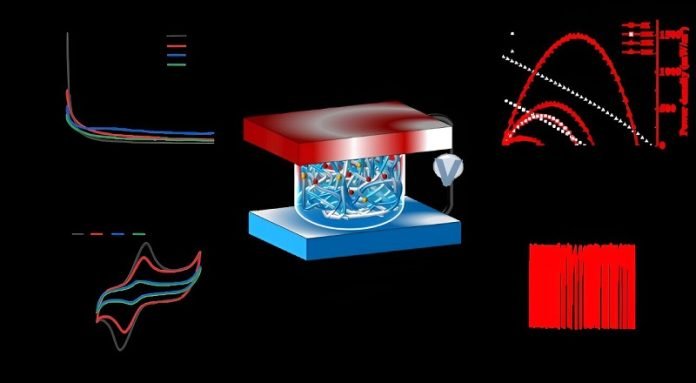
Researchers have developed an innovative energy device that can transform heat directly into electricity using a process that involves special materials reacting at the atomic level.
This device, mainly focused on room temperature applications, offers promising results for powering electronic gadgets and even large-scale systems like solar panels.
At the heart of this technology are thermoelectric conversion devices that utilize ionic hydrogel—a substance that is capable of conducting electrically charged particles.
This gel is strategically placed between electrodes, which are materials that help conduct electricity.
The unique aspect of these electrodes is that they’re coated with a material called Prussian blue, which undergoes a reaction that significantly boosts the device’s energy and power outputs.
This research, led by Professor Zeng Wei from the Institute of Chemical Engineering at the Guangdong Academy of Sciences, has undergone various phases.
Initially, the focus was on the movement of heat through the materials, but the results were not as successful as hoped.
However, the team didn’t give up; they shifted their approach to enhance the device’s efficiency by integrating redox reactions directly at the electrodes.
A redox reaction involves the transfer of electrons, which is crucial for generating electricity.
The shift in strategy paid off, allowing ions to react directly at the electrodes when heated, instead of being pushed by an electric current.
This improvement cut down the distance electrons had to travel, greatly enhancing the conversion efficiency of the device. As a result, these generators can now operate much more efficiently and for longer periods.
The device achieved an impressive instantaneous power density of 3.7 mW/m2K^2 and could maintain an energy output of 194 J/m2 for two hours at a temperature difference of 10 degrees Celsius.
Additionally, it demonstrated a Carnot relative efficiency—a measure of the maximum potential efficiency of a heat engine—of 0.12% at specific temperature conditions.
These promising results indicate that such devices can be used continuously to power wearable electronics and sensors.
Moreover, there’s potential for broader applications, such as enhancing solar panel efficiency by converting the heat they absorb into additional electricity. The devices could also be used for heat recovery in building walls, helping to power the buildings themselves.
Looking ahead, the team aims to further improve these devices. They plan to explore new materials to increase the electrodes’ redox capacity and optimize the hydrogel’s structure and material composition.
These enhancements could lead to even greater energy efficiencies and more widespread applications.
Contributors to this research include notable academics from the Guangdong University of Technology and the Hong Kong University of Science and Technology, all working together to push the boundaries of how we generate and use energy.



